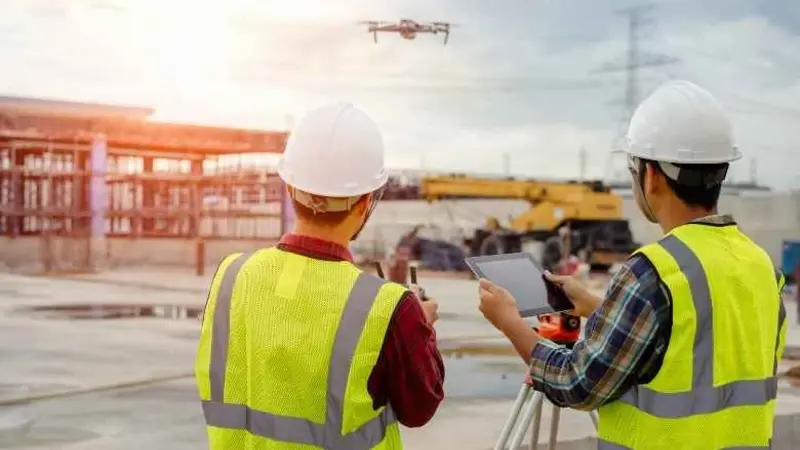Structural engineering services are continually evolving, driven by advancements in technology, materials, and construction methodologies. In this article, we will explore the latest innovations in structural engineering services, including trends and technologies that are shaping the future of the industry and revolutionizing the way structures are designed, built, and maintained.
Advanced Analytical Tools and Software
One of the most significant innovations in structural engineering services is the proliferation of advanced analytical tools and software. These tools enable structural engineers to conduct sophisticated analyses, simulations, and optimizations, allowing them to design more efficient, resilient, and cost-effective structures. From finite element analysis (FEA) to computational fluid dynamics (CFD), structural engineering software has become indispensable in the design process. For optimal structural design solutions, explore Ecoden Constructions.
- Finite Element Analysis (FEA): FEA is a powerful computational method used to analyze the behavior of complex structures under various loading conditions. It divides structures into smaller elements to simulate how they respond to forces, stresses, and deformations. FEA software allows engineers to predict structural performance with high accuracy.
- Computational Fluid Dynamics (CFD): CFD is used to simulate fluid flow and heat transfer in and around structures. It helps analyze wind loads, air flow patterns, and thermal effects, allowing engineers to optimize building designs for natural ventilation and energy efficiency.
- Building Information Modeling (BIM): BIM software enables multidisciplinary teams to create, share, and visualize 3D models of building projects. It integrates structural components into a digital environment, facilitating collaboration and coordination among architects, engineers, and other stakeholders.
- Parametric Modeling: Parametric modeling tools allow engineers to create flexible designs that can be easily adjusted and optimized based on design parameters. They use mathematical algorithms to generate design variations automatically, facilitating the exploration of multiple design options.
- Topology Optimization: Topology optimization software optimizes the layout of material within a design space to maximize structural performance while minimizing material usage. It helps engineers identify efficient structural configurations that meet performance requirements.
- Risk Assessment and Reliability Analysis: These tools evaluate the probability of structural failure and assess the reliability of designs under uncertain conditions. They use probabilistic methods to quantify risks and identify potential failure modes, helping engineers design structures that meet safety standards.
- Visualization and Simulation Tools: These tools allow engineers to visualize, animate, and simulate structural behavior in 3D virtual environments. They enhance collaboration, decision-making, and design communication by providing interactive visualization of structural models.
- Cloud-Based Collaboration Platforms: Cloud-based platforms facilitate remote collaboration among project teams by providing a centralized platform for sharing, reviewing, and commenting on design data. They improve communication and workflow efficiency, enabling project teams to work together seamlessly.
- Advanced Materials Modeling: These tools simulate the behavior of complex materials under different loading conditions. They provide insights into material properties, failure mechanisms, and durability performance, helping engineers select suitable materials for structural applications.
- Performance-Based Design: Performance-based design software allows engineers to design structures based on specific performance criteria rather than prescriptive code requirements. It considers factors such as occupant safety, structural reliability, and resilience against hazards, enabling engineers to tailor designs to meet project objectives.
Building Information Modeling (BIM)
Building Information Modeling (BIM) has transformed the way structural engineering services are delivered. BIM allows architects, engineers, contractors, and other stakeholders to collaborate seamlessly on a digital platform, sharing information, coordinating designs, and identifying potential conflicts before construction begins. BIM enhances communication, reduces errors, and streamlines the construction process, resulting in better outcomes for all parties involved.
Parametric Design and Generative Algorithms
Parametric design and generative algorithms are revolutionizing the way structures are conceptualized and optimized. These computational design techniques enable structural engineers to explore a vast array of design options, iterate rapidly, and generate innovative solutions that were previously unimaginable. By harnessing the power of algorithms and automation, structural engineering services can push the boundaries of design excellence and create truly unique and efficient structures.
Advancements in Materials Science
Advancements in materials science are opening up new possibilities in structural engineering services. From high-performance concrete and steel alloys to carbon fiber composites and engineered timber, new materials offer enhanced strength, durability, and sustainability characteristics. Structural engineers are leveraging these materials to design lighter, stronger, and more resilient structures that meet the evolving needs of modern infrastructure.
Resilient and Sustainable Design Practices
Resilience and sustainability are increasingly important considerations in structural engineering services. With the growing threat of climate change and natural disasters, structural engineers are designing structures that can withstand extreme weather events, seismic activity, and other hazards. Sustainable design practices, such as passive heating and cooling, rainwater harvesting, and renewable energy integration, are also being incorporated into structural engineering services to minimize environmental impact and promote long-term sustainability.
Conclusion
In conclusion, innovations in structural engineering services are transforming the way structures are designed, built, and maintained. From advanced analytical tools and software to parametric design algorithms and sustainable materials, these innovations are driving progress and pushing the boundaries of design excellence. By embracing technology, sustainability, and resilience, structural engineering services are shaping the future of the built environment and creating structures that are safer, more efficient, and more sustainable for generations to come.
